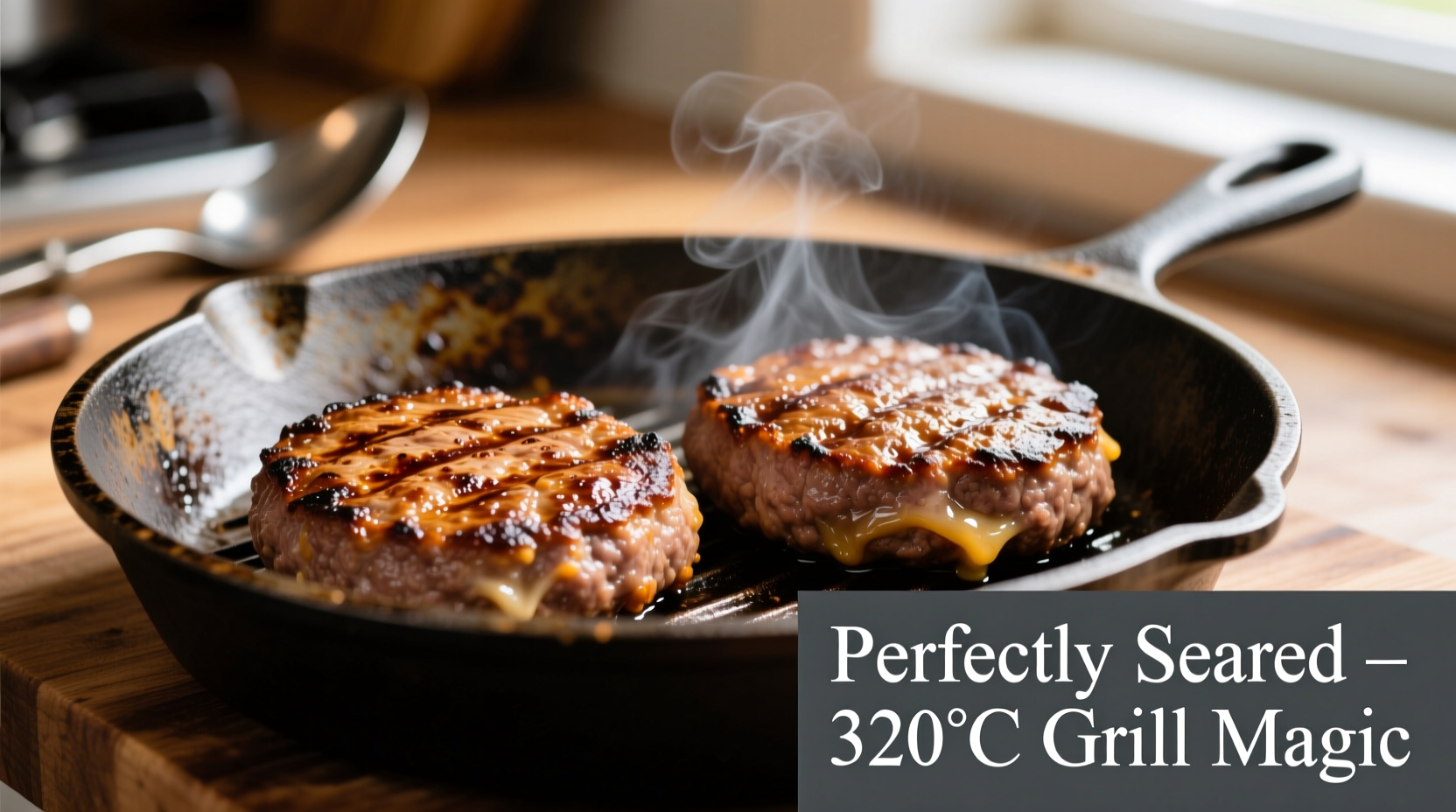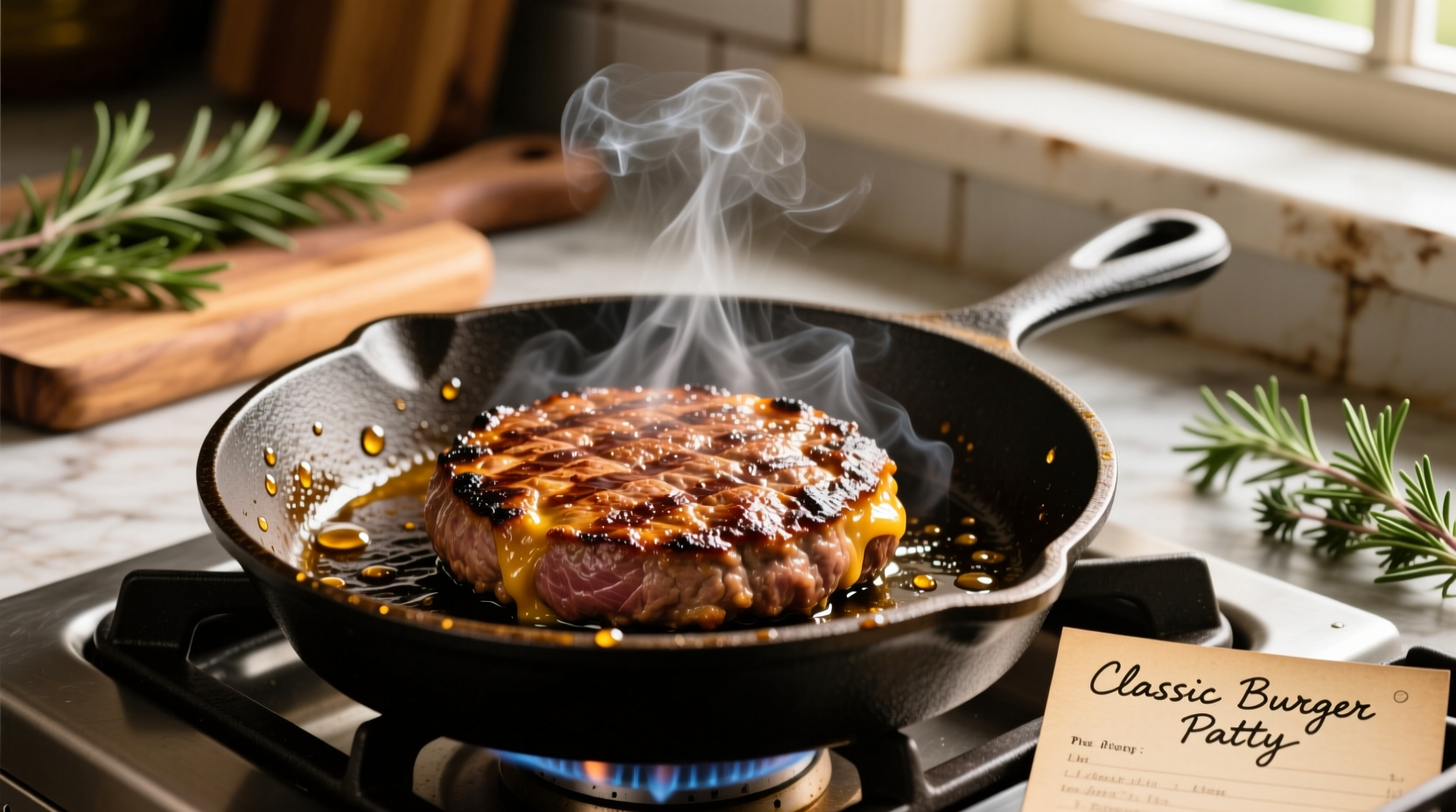The perfect burger patty requires 80% lean ground beef formed into ¾-inch thick patties with a slight center dimple, cooked to 160°F internal temperature using medium-high heat, and rested for 5 minutes before serving. This method ensures juicy, evenly cooked burgers with optimal flavor development through the Maillard reaction.
Mastering the art of burger patty preparation transforms an ordinary meal into an extraordinary culinary experience. Whether you're firing up the grill for summer cookouts or perfecting stovetop technique for year-round enjoyment, understanding the science behind patty formation, cooking temperatures, and resting periods makes all the difference. This guide delivers professional chef techniques backed by food science principles that guarantee restaurant-quality results every time you cook burger patties.
Essential Burger Patty Preparation Techniques
Starting with quality ingredients sets the foundation for exceptional burgers. The USDA Food Safety and Inspection Service recommends using ground beef with 20% fat content (80/20 ratio) for optimal moisture retention during cooking. Fat melts during the cooking process, basting the meat from within and preventing dryness.
When forming patties, handle the meat minimally—excessive handling compacts the proteins, resulting in tough burgers. Gently shape the meat into balls before flattening to ¾-inch thickness. Create a shallow dimple (about ¼-inch deep) in the center of each patty. This counteracts the natural tendency of burgers to swell and become rounded during cooking, ensuring even thickness throughout.
| Cooking Method | Optimal Temperature | Cooking Time (per side) | Best For |
|---|---|---|---|
| Cast Iron Skillet | Medium-high (375°F) | 3-4 minutes | Indoor cooking, maximum crust development |
| Gas Grill | Medium-high (350-400°F) | 4-5 minutes | Outdoor cooking, subtle smoky flavor |
| Charcoal Grill | Medium-high (direct heat) | 3-4 minutes | Rustic cooking, pronounced smokiness |
| Electric Griddle | 375°F | 4-5 minutes | Consistent indoor cooking, multiple patties |
Perfect Cooking Process for Juicy Results
Preheat your cooking surface for 10-15 minutes before adding patties. Proper preheating ensures immediate sear development, which locks in juices through the Maillard reaction—the chemical process responsible for browning and flavor development. According to the American Meat Science Association, this reaction occurs most effectively between 285-325°F.
Place patties on the hot surface without pressing down. Many home cooks make the critical error of smashing burgers with a spatula, which forces out precious juices and creates steam that prevents proper browning. Flip burgers only once, after a well-developed crust has formed (typically 3-4 minutes depending on thickness and heat).
For cheeseburgers, add cheese during the final minute of cooking. American cheese provides the smoothest melt, but specialty cheeses require lower heat to prevent burning. The Food Safety and Inspection Service confirms that ground beef must reach 160°F internal temperature to eliminate harmful bacteria—a temperature where the meat will no longer appear pink.

Avoiding Common Burger Cooking Mistakes
Understanding context boundaries prevents kitchen disasters. Never salt patties more than 30 minutes before cooking, as salt draws out moisture that evaporates during cooking, resulting in drier burgers. Instead, season generously with coarse salt and freshly ground pepper immediately before cooking.
Resist the temptation to frequently check burger temperature. Each time you lift the patty, you lose heat and disrupt the searing process. Use an instant-read thermometer for accuracy—insert horizontally into the side of the patty to avoid false readings from the center.
Resting time is non-negotiable for juicy results. Allow cooked patties to rest for 5 minutes before serving. During this period, the meat fibers relax and reabsorb juices that would otherwise spill out when cut. Professional chefs universally agree this step makes the difference between mediocre and exceptional burgers.
Advanced Techniques for Flavor Enhancement
For deeper flavor complexity, incorporate umami-rich ingredients directly into the meat mixture. Finely minced mushrooms (about 10% of total weight) blend seamlessly while boosting savory notes without altering texture. Alternatively, mix in 1-2 teaspoons of Worcestershire sauce per pound of ground beef for enhanced depth.
Temperature control separates novice cooks from experts. When cooking multiple batches, reduce heat slightly after the first round as residual heat builds in your cooking surface. This prevents subsequent patties from overcooking while the first ones rest.
Food Safety Essentials for Burger Preparation
Follow USDA guidelines for safe handling: keep raw meat refrigerated below 40°F until ready to use, prevent cross-contamination by using separate cutting boards for raw meat, and clean all surfaces that contact raw meat with hot, soapy water. Never partially cook burgers and finish later, as this creates ideal conditions for bacterial growth.
For those concerned about doneness levels, the American Heart Association recommends cooking ground beef to 160°F regardless of preference for rare or medium-rare steaks. Unlike whole cuts where surface bacteria are the primary concern, ground beef distributes potential pathogens throughout the product.











 浙公网安备
33010002000092号
浙公网安备
33010002000092号 浙B2-20120091-4
浙B2-20120091-4